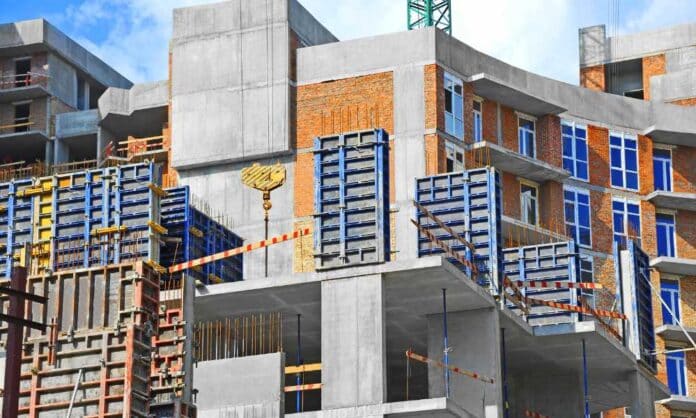Formwork is critical for ensuring concrete cures properly in its intended form. There are many types of concrete formwork available, and each one holds a purpose. Learning about the different kinds is essential for those in the concrete construction industry.
Concrete Metal Formwork Is Essential in the Construction Industry
Concrete is one of the most-used materials in construction. To create the elements of buildings, crews must pour concrete into the concrete metal formwork, a specially designed mold that allows the concrete to cure into the desired shape. Formwork comes in temporary and permanent structures. Formwork may be classified in the following ways.
- The type of material used to make the formwork
- The concrete element it supports
- Whether it is removable or permanent
There are several types of concrete formwork used in the industry. Older types are rarely used, and these include table forms and tunnel forms. Most kinds of concrete formwork are modular in design so they can be used efficiently. The goal of the minimalist design is to reduce waste and improve accuracy. The following are the most common types of concrete formwork used in the construction industry today.
- Horizontal panel
- Slipform
- Vertical panel systems
- Permanent
- System column
- Jumpform
Construction crews will use various types of concrete formwork to ensure their building components are durable and formed correctly. Choosing the appropriate formwork is essential for safety and strength.
Factors That Determine Satisfactory Formwork
Construction projects need reliable and effective formwork to ensure the proper formation of concrete structures. Contractors look for the following when selecting concrete formwork for their projects.
- The formwork must be capable of holding live and dead loads.
- The joints of the formwork must be leak-proof.
- The formwork must retain its shape without buckling or warping.
- The formwork should be as light as possible for ease of movement.
- Removing the formwork should not damage the concrete structure.
- The formwork should be made from reusable materials.
The main deciding factor when selecting formwork is the kind of concrete being poured and the pouring temperature. Both of these affect the pressure exerted on the concrete formwork as the concrete gets poured and begins to cure. In addition to the formwork molds, contractors must use stabilizers and poles to hold the formwork in place as the concrete cures. These are called falsework.
Concrete Formwork Materials
Manufacturers use multiple materials to construct concrete formwork. Contractors use these formwork materials based on the kind of concrete and type of project.
- Timber formwork
- Plywood formwork
- Metal formwork
- Plastic formwork
- Fabric formwork
- Stay-in place formwork
- Permanent insulated formwork
Of the above types, metal formwork is the strongest and most versatile. This material is long-lasting and creates a beautifully smooth finish on concrete. Metal is waterproof and prevents honeycomb patterns from developing on the concrete and causing the surface to become marred.
Check out: Getting Started with Hyperconvergence: A Beginner’s Definitive Guide
Manufacturers also classify formwork according to its purpose. For instance, there are specific formwork molds for walls, foundations, beams, and column work. Using formwork appropriately ensures proper formation.
Discover the Options Today
Concrete formwork is an essential tool in the arsenal of contractors. Without these molds, it would be impossible to create concrete structures that remain structurally sound.
Formwork varies in design and material, making it versatile to be used in a variety of construction projects. By selecting the correct mold, construction crews can do their jobs more effectively.
Check out: How to Make Time Tracking Easier on the Construction Site

